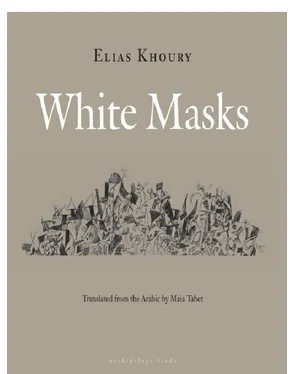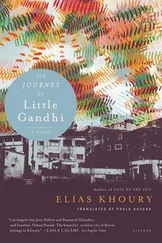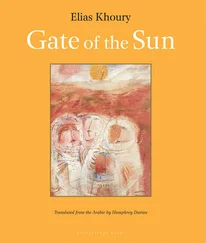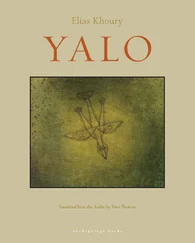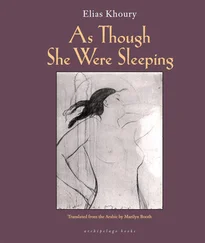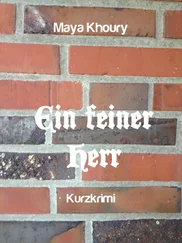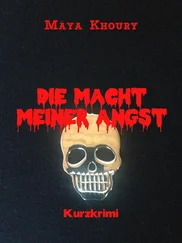So I went back to my mother’s. I found her staring at the posters again.
“Didn’t you ask him who killed him?” I said.
“I’ve asked him several times, but every time we ask, the coffee cup stops moving. The sheikha says it means he doesn’t want to answer.”
“More likely it means that he doesn’t know,” I said.
“No,” she replied. “The sheikha told me that when the cup is still, it means that the spirit doesn’t want to answer. When it doesn’t know, it says so, but when it doesn’t want to answer, then the cup stops moving across the table.”
I thought I might go and visit the sheikha myself one day and have her summon my father’s spirit. I’d ask him to tell me about the murderer. I know he’d answer me, I’m sure he would. He wouldn’t tell my mother because he knows how she is.
But then I got scared. Even though I don’t believe in all that stuff, it still scares me. Spirits are spooky and Nadeem would kill me if he found out. So I didn’t go.
And now, you know what’s happening to her? Someone told me they saw my mother on the street one day with Abu Khalil, the neighbor. They had all these posters with them, she’d hand him one and he’d plaster it on the wall. When I told her this had to stop, she denied it all. But I know that Abu Khalil is always over at her place, whenever I go he’s there. And as soon I arrive, he leaves.
People are gossiping about him spending all his time visiting her. He’s alone now, his wife’s been dead a long time, and after his son died, his daughter-in-law took their little boy and went back to her parents’.
It really scares me. Nadeem thinks Mother has lost her senses, that she cares only about Abu Khalil and those posters and not her grandchildren.
And I’m scared.
CHAPTER VII. Provisional Epilogue
This is no tale.
The fate of Khalil Ahmad Jaber was indeed a tragic one.
But the greater problem remains: the murderer remains unidentified. We have a mystery murderer.
The people I questioned during the course of my investigation felt they could not identify the murderer. Some said they simply didn’t know. Anyway, had they known, they wouldn’t have told me, and had they told me, I wouldn’t have divulged anything. And even assuming I had — or could have done so-I certainly wouldn’t have dared to put it down in writing.
But is that the problem?
Is the identification of the murderer the problem? Would it help us understand the motives for the crime?
I don’t think so.
No. Even assuming the murderer was identified, and the motives of the crime were known, even if, finally, the murderer were put to death, it wouldn’t change anything. People say that putting murderers to death serves as a deterrent to others but, in reality, no one is being deterred. Murderers are executed and nothing changes. Take for example, the two men hanged for the murder of the Ibrahim family-a man, his wife, and their daughter — whose bodies were buried in a fallow field near the village of Maghdousheh. The ripple effect was nil. Witness the murder of Khalil Ahmad Jaber.
I find myself completely baffled: this author feels he really doesn’t know what happened in his story and that he’s not in full possession of the facts — whereas normally, an author is supposed to know all the details of his story, especially the ending. He’s supposed to let the ending unfold gradually and slowly, so that the reader can draw his own conclusions.
But in the case of this story, the author doesn’t know anything, and he also hasn’t been able to present the facts in the gradual and slow manner necessary to both convince and entertain the reader. And when the author’s in the dark, the plot really does thicken. It could have been Ali Kalakesh who did it, or Fatimah Fakhro, or Sameer Amro, or Fahd Badreddin, or Zayn’Alloul, or maybe Abu Saïd, or even Nadeem Najjar, or even, why not, Elias Khoury, or yet another?
Let us turn the enigma on its head and view it from a slightly different angle: in whose interest was it to kill Khalil Ahmad Jaber? Logically, nobody’s, for Khalil Ahmad Jaber had no enemies, nor was he involved in anything remotely shady. He was a most transparent man.
So then, it could have been suicide. While that is a distinct possibility, it has been set aside on two counts: first, the forensic pathologist’s report, which clearly demonstrates that the victim could not have shot himself, given the position of the corpse when it was found. Even assuming that Khalil Ahmad Jaber had discovered some novel and unprecedented way of killing himself, it is impossible that he would have mutilated himself in that cruel way. The forensic pathologist’s report is quite unequivocal: the martyr was clearly tortured; his body bore the telltale marks.
Second, the rarity of suicides in Beirut: I don’t know of a single Arab writer who has committed suicide, aside from Tayseer Subool. Oh, they despair alright, their writings are full of ranting and angst, but they don’t commit suicide. . even though the suicide of a writer might have a huge impact. Anyhow, I shouldn’t be going off on tangents: Khalil Ahmad Jaber was not a writer, I mean he didn’t have that particular sensibility that writers and artists possess, and if writers aren’t committing suicide, surely ordinary law-abiding citizens — without any of the writer’s heightened sensibility — aren’t about to do so.
That said, I knew a man who committed suicide. But he wasn’t a writer, he was a tailor. I barely remember the story, I was six years old then. I was out playing on the street with the kids from my neighborhood. We were playing shalleek, a somewhat complicated game where you start by throwing a sharpened pole, like a stake, right into the middle of a circle drawn on the ground with a stick. The one who succeeds in doing that goes first; he has to hit the stake hard enough with a stick to make it catapult into the air and fall as far away as possible. My father forbade me playing this game because it was dangerous, especially for our eyes. Anyway, there we were playing shalleek, when all of a sudden we heard all this screaming and carrying-on coming from the tailor’s house. Everyone ran — the entire street, including us children, ran to see what was happening.
As I stepped into the house, I saw, in the middle of a crowd of men and women in tears, my father holding the tailor’s wife by the hand. As soon as he caught sight of me, he let go of her hand and came towards me.
“Go home,” he said.
When I asked him what was happening, he replied that the neighbor had committed suicide.
“What does that mean?” I asked.
“That means he committed suicide, that he’s dead. Now, go on home!”
Later, I heard him tell my mother that the tailor had committed suicide in Rawsheh — he’d plunged off the waterfront road and his bloated corpse was found floating off Ouza’ï.
What did he mean, “committed suicide in Rawsheh”? I thought people went there to swim, around and under Pigeon Rock — the way I did many years later, with my beautiful girlfriend, Surayya. We would paddle together on a hasakeh to swim around the Rock. Poor Surayya, she’s married and fat now, nothing like she used to be. When I ran into her outside the American University Hospital, I hardly recognized her.
The tailor committed suicide in Rawsheh, where everyone swam! I used to imagine my swimming there one day and bumping into a corpse, but when I eventually did, there were no corpses. There was just Surayya. Surayya was everywhere: beside me, around me, with me. She would plunge underwater and swim away, and though I chased her, over and over again, I could never catch her — although, Mr. Nohad, the barber, did. He came along and caught her alright, and he transformed her into another woman.
Читать дальше
